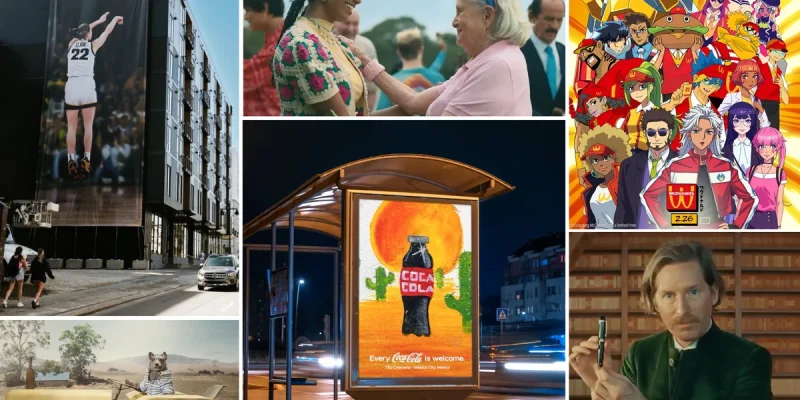Long Advertising: Maximizing Impact Through Extended Campaigns

In the fast-paced world of marketing, many businesses focus on short-term campaigns for immediate results. However, long advertising—sustained campaigns running over an extended period—offers a unique way to build trust, enhance brand awareness, and achieve long-lasting results.
This article dives deep into long advertising, its benefits, examples, and how to create impactful long-term campaigns that resonate with your target audience.
What Is Long Advertising?
Long advertising refers to marketing campaigns that are designed to run consistently over an extended period, often months or years. These campaigns aim to establish a brand identity, create a deeper connection with the audience, and generate sustained engagement.
Characteristics of Long Advertising
- Consistency: Messaging, tone, and visuals remain aligned throughout the campaign.
- Longevity: Campaigns typically last for a year or more.
- Cumulative Impact: Builds momentum over time, reinforcing the brand’s presence in the market.
Benefits of Long Advertising
Stronger Brand Recognition
Repeated exposure over time ensures that your brand becomes a household name. Consumers are more likely to remember and trust brands they see consistently.
Improved Customer Loyalty
Long-term campaigns focus on building relationships rather than immediate sales. This fosters customer loyalty and retention.
Sustainable Growth
By focusing on long-term goals, businesses can achieve sustainable growth rather than relying on short bursts of activity.
Cost Efficiency
While long campaigns may seem expensive upfront, they often deliver better ROI over time by maximizing the value of consistent engagement.
Credibility and Trust
A consistent presence over months or years signals stability and reliability, boosting credibility among consumers.
Examples of Successful Long Advertising Campaigns
Coca-Cola’s “Share a Coke” Campaign
- Duration: Launched in 2011 and adapted globally over several years.
- Key Idea: Personalized bottles with popular names encouraged consumer engagement and sharing on social media.
- Impact: Boosted sales and became one of Coca-Cola’s most memorable campaigns.
Nike’s “Just Do It”
- Duration: Running since 1988.
- Key Idea: Motivational messaging that resonates universally, paired with endorsements from top athletes.
- Impact: Elevated Nike to an iconic global brand.
Apple’s “Get a Mac” Campaign
- Duration: Ran for 4 years (2006–2010).
- Key Idea: A humorous comparison between Macs and PCs to highlight Apple’s simplicity and innovation.
- Impact: Reinforced Apple’s image as user-friendly and forward-thinking.
How to Create a Successful Long Advertising Campaign
Set Clear, Long-Term Goals
Define what you want to achieve, such as:
- Building brand awareness.
- Increasing market share.
- Establishing thought leadership.
Develop a Consistent Brand Message
Ensure your message aligns with your brand identity and remains consistent across platforms.
Understand Your Target Audience
Long campaigns require a deep understanding of your audience’s preferences, pain points, and habits.
- Use market research and data analytics to refine your approach.
- Adapt messaging as needed to stay relevant over time.
Use Multi-Channel Strategies
Reach your audience across various platforms to maximize impact.
- Digital Channels: Social media, email, and PPC campaigns.
- Traditional Media: TV, radio, and print ads.
- Outdoor Advertising: Billboards and transit ads for sustained visibility.
Focus on Storytelling
Consumers connect more deeply with brands that tell compelling stories.
- Use narratives that resonate emotionally with your audience.
- Develop a consistent theme that can evolve over time.
Monitor and Optimize Performance
Track key performance indicators (KPIs) to assess the campaign’s effectiveness.
- Use tools like Google Analytics or social media insights to measure engagement.
- Make adjustments to ensure the campaign stays fresh and relevant.
Challenges of Long Advertising Campaigns
Maintaining Relevance
Consumer preferences change over time. It’s essential to adapt your campaign without losing its core message.
High Initial Costs
While long advertising delivers great ROI, upfront costs can be significant.
Risk of Fatigue
Audiences may grow tired of seeing the same message repeatedly. Adding variations to the campaign can prevent this.
Long Advertising vs. Short Advertising
| Aspect | Long Advertising | Short Advertising |
| Duration | Months to years. | Weeks to a few months. |
| Focus | Building relationships and trust. | Driving immediate results. |
| ROI | Higher over time. | Quick but may lack long-term impact. |
| Cost | Higher upfront investment. | Lower initial cost. |
| Adaptability | Requires updates to stay relevant. | Easier to adjust mid-campaign. |
Conclusion
Long advertising is a powerful strategy for businesses looking to achieve lasting success. By focusing on consistent messaging, multi-channel outreach, and audience connection, these campaigns deliver more than just immediate results—they build a foundation for sustained growth and loyalty.
Whether you’re a small business or a global brand, incorporating long advertising into your marketing strategy can help you stand out in a crowded market and create a lasting impression.
Ready to launch a campaign that stands the test of time? Start planning your long advertising strategy today!
FAQs
1. What is long advertising?
Long advertising refers to marketing campaigns designed to run consistently over an extended period, focusing on long-term goals like brand awareness and customer loyalty.
2. How does long advertising benefit businesses?
It builds stronger brand recognition, fosters loyalty, and delivers sustainable growth through consistent engagement.
3. Can small businesses use long advertising?
Yes, small businesses can adopt long advertising strategies by focusing on cost-effective channels like social media and content marketing.
4. How do you measure the success of long advertising campaigns?
Track metrics like brand awareness, customer engagement, website traffic, and sales growth over time.
5. How do you keep a long campaign fresh?
Introduce new creatives, refine messaging, and adapt to current trends while maintaining the core theme.
Also read: Jack in the Box Closing: Understanding the Reasons Behind Store Closures











